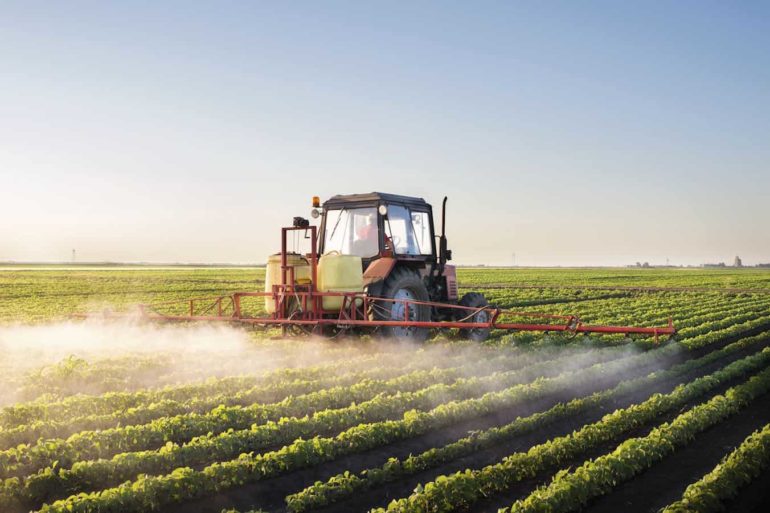Two big international agreements have been in the news lately. Last week, President Obama and Chinese President Xi Jinping signed onto the Paris Agreement on climate. The Trans-Pacific Partnership (TPP) involving a dozen countries and covering 40 percent of the global economy, has become a hot button issue in the Presidential election. Unfortunately, like stubborn school children the two agreements aren’t talking to each other—and our planet and food systems could pay the price, according to the new report The Climate Cost of Free Trade: How the TPP and other trade deals undermine the Paris climate agreement by the Institute for Agriculture and Trade Policy.
National commitments to reduce greenhouse gas emissions, covering sectors like energy, agriculture, and forestry, are at the heart of the Paris climate agreement. Nearly 80 percent of countries’ national climate plans (known as Intended Nationally Determined Contributions or INDCs) include actions on agriculture. Countries are grappling with the best strategies to both reduce agricultural emissions and adapt their food production to climate change. Yet, the policy straightjackets of current trade regimes are major obstacles.
The global food system, including agricultural production and associated land use, is responsible for one-third of global greenhouse gases. The U.N. Food and Agriculture Organization (FAO) identifies the top sources of agricultural emissions as coming from methane produced by livestock (39 percent of the sector’s GHG emissions, with much of this from large-scale, confined operations) and nitrous oxide from synthetic fertilizers used to grow commodity crops, such as corn and soybeans. While agriculture’s direct emissions are considerable, the FAO estimates that an additional 4 billion tons of carbon dioxide equivalent are emitted annually due to deforestation associated with expanded agricultural production.
Most of agriculture’s global emissions mirror the growth of an industrial model of agriculture designed to compete in global markets and take advantage of trade rules put in place over the last several decades. Trade deals, including the TPP, accelerate the expansion of this industrial model.
For example, trade rules at the World Trade Organization, and regional deals like the TPP, seek to harmonize food safety rules between countries, including rules governing pesticide and veterinary drug residues on food. Trade rules put extensive administrative burdens on food safety policies, demanding they be “least trade restrictive,” rather than prioritizing public health and the environmental sustainability of agricultural production as criteria.
The application of intellectual property rights to seeds is another aspect of trade rules. Maintaining genetic diversity in crop and animal production is a critical tool for adapting to climate change. But the TPP requires all participating countries to sign on to a global seed breeders’ rights treaty (known as UPOV91), which prohibits farmers and breeders from exchanging protected seeds, while empowering global seed companies like Monsanto and Syngenta.
Last year, MIT researchers found that strengthening food production at the national level (sourcing less from international markets) will be essential for addressing food security concerns associated with climate change. But agricultural trade rules limit a country’s ability to build strong national and local food systems. The TPP goes beyond the World Trade Organization (WTO) to place limits on tariffs importing countries use to slow an influx of cheap imports that undercut their domestic production.
Climate change is expected to disrupt agricultural production, therefore increasing food price volatility in years to come. Among developing countries, food reserve strategies are regaining traction. A centuries-old strategy of putting food (usually storable grains and beans) aside in times of plenty for times of scarcity, food reserves are seen as particularly critical for vulnerable, food import-dependent countries. Yet WTO rules have routinely conflicted with various approaches to food reserves; the most recent skirmish is over India’s National Food Security Policy Act.
Land use and domestic ownership of land are also heavily influenced by trade and investment rules. Investor state provisions in agreements like North American Free Trade Agreement (NAFTA) and TPP grant foreign investors special legal rights. According to researchers from Tufts University, free trade deals limit the ability of governments to address land grabbing and to implement the Voluntary Guidelines on the Governance of Land Tenure (on appropriate land investment) established by the FAO. Many recent land grabs have been driven by a rush to control scarce resources in the wake of the 2007-2008 food price crisis and in the face of expected global supply chain disruptions caused by climate change.
If countries are going to reach their climate goals as part of the Paris Agreement, we’re going to have to stop bad trade deals like the TPP from going forward. Trade concerns can no longer override our ability to address climate change, food security and the transition we need to make toward agroecological practices that both build climate resilience and reduce emissions.
Read the full IATP report, here.







